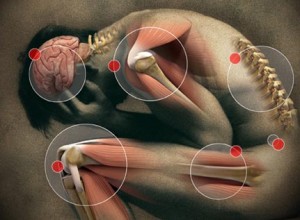Imagine a time in your life when you experienced pain. Not the “I banged my shin on the coffee table” kind of pain, but the type of pain that doesn’t go away and signals to you that something might be seriously wrong. Many of you may be remembering an injury or an illness that likely led you to seek professional medical care. In the end, nothing was more relieving than the diagnosis and treatment that ultimately made the pain go away. But for some, this relief never comes and the pain persists. For millions of Americans, this is reality as they cope and live with chronic pain. 
In honor of Pain Awareness Month this September, we at Men’s Health Network feel it is important to educate men on the plight of those who bravely live with chronic pain. Chances are you know numerous people afflicted by this disease, but because the worst moments are typically experienced in the privacy of their own home, you may not even know it. Add to that, the fact that men typically hold off on seeing a doctor until their condition is much worse and unrelenting, and it becomes clear why there is such a great need to build awareness in this country.
But it isn’t something we should be ashamed of or hide from. According to the Institute of Medicine, chronic pain affects more Americans than diabetes, heart disease and cancer combined. It can be caused by a variety of ailments or injuries and while the onset of chronic pain can happen quite quickly, treating and managing that pain can prove a much longer, often highly frustrating road for patients.
Beyond the significant health impact, chronic pain also takes its toll on our economy as well. The medical costs of pain care and the economic costs related to lost wages and productivity can amount to at least $560 billion annually. Yet, while healthcare costs rise and an estimated 100 million Americans suffer from various forms of chronic pain, little is understood about the condition or treatment options available.
While researchers work diligently to identify the sources of chronic pain, doctors are working with their patients to identify the best methods for treating each person’s individual symptoms including physical therapy, behavioral changes and medications. Unfortunately, far too often the pain these Americans experience is overshadowed by those who abuse and misuse treatments. Certainly steps must be taken to alleviate prescription drug abuse in this country, but it is also important to acknowledge the value that these medications provide to millions who need them. We are encouraged by the programs that are being established across the country to address the issue of prescription medication abuse such as “take back days” which allow Americans to dispose of their prescriptions safely and reduce the risk of misuse.
Chronic pain is debilitating, but it should not be definitive. As you reflect on those in your life who may experience chronic pain, we encourage you to offer support and help us raise awareness of this growing public health issue. That’s the first step in the fight to eliminate chronic pain.



